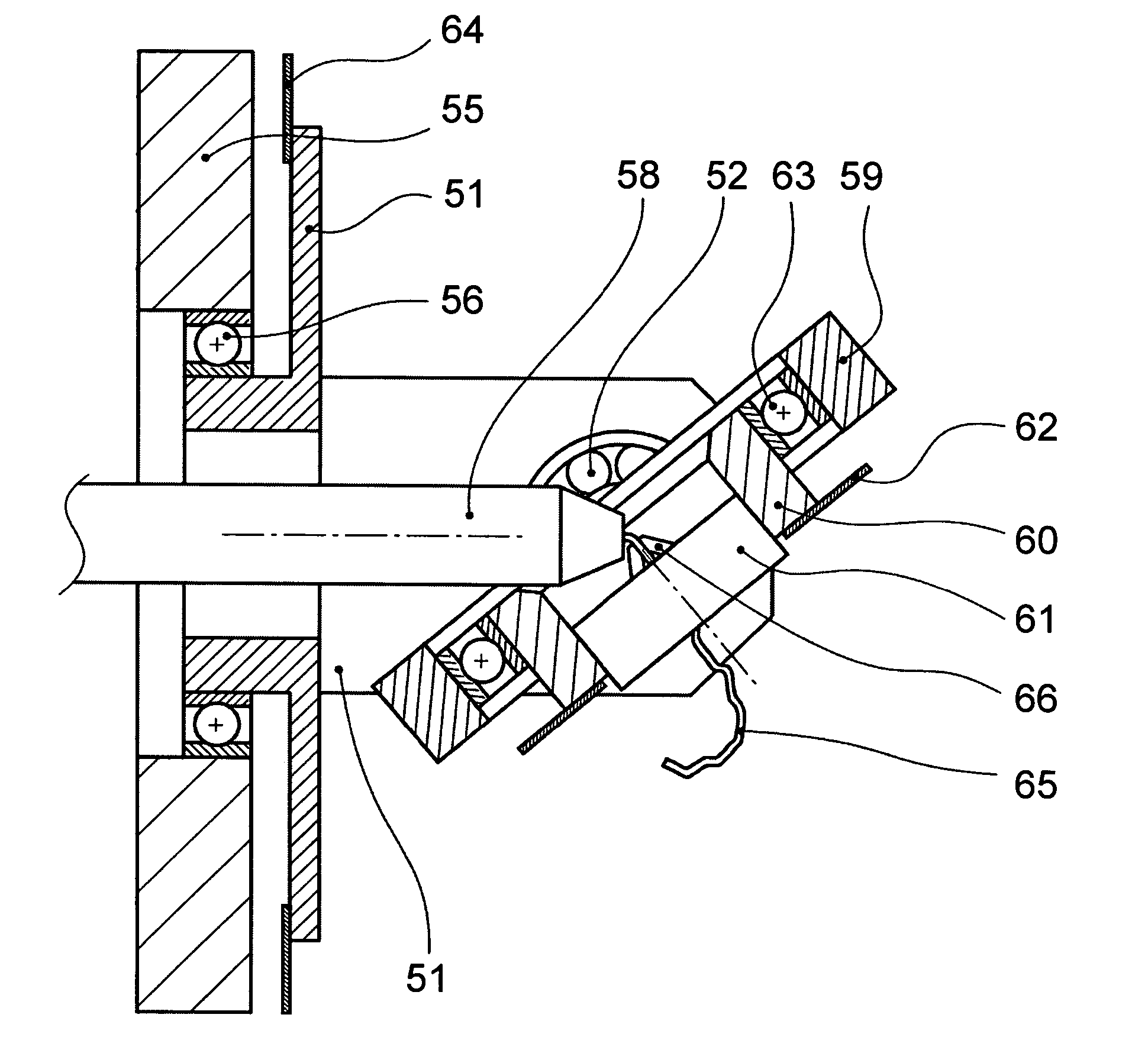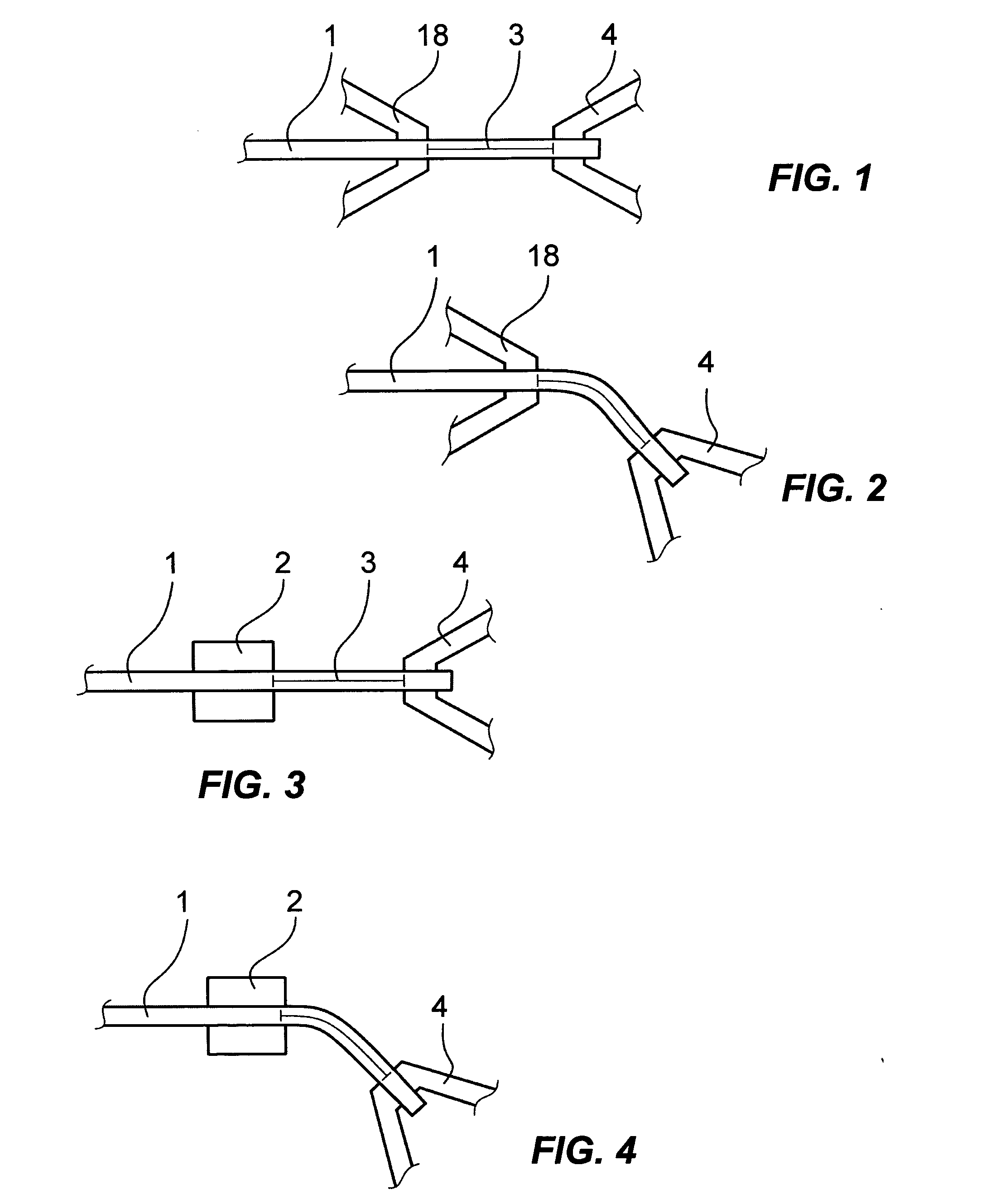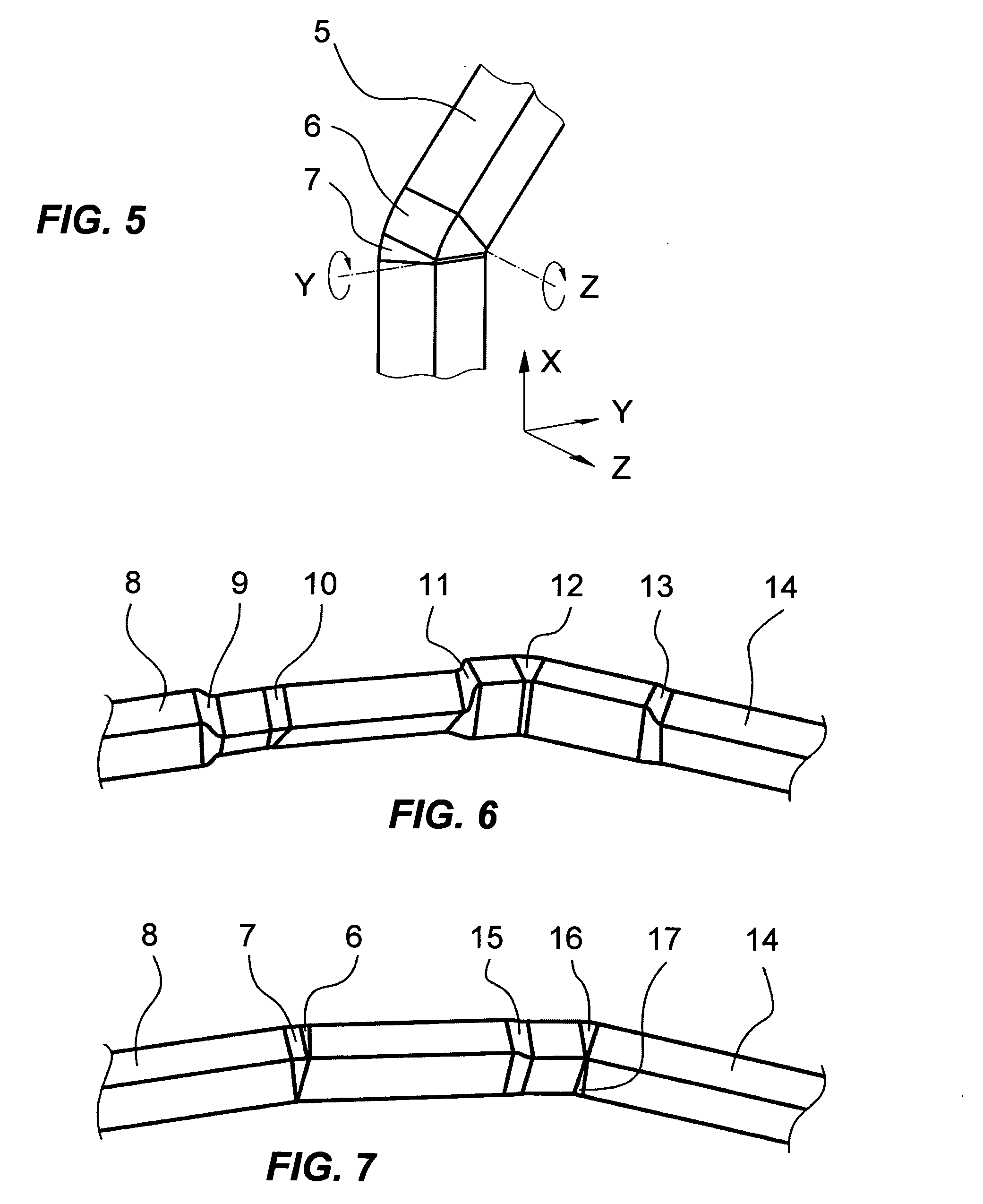Method and device for shaping an orthodontic archwire
a technology of orthodontic archwires and wires, which is applied in the direction of dental surgery, manufacturing tools, dental tools, etc., can solve the problems of large disadvantage of consuming significant wire length and far too much, and achieve the effect of reliable and efficien
- Summary
- Abstract
- Description
- Claims
- Application Information
AI Technical Summary
Benefits of technology
Problems solved by technology
Method used
Image
Examples
Embodiment Construction
Six Axis Robot Having One Gripper
[0036] The robot as disclosed in U.S. Pat. No. 6,612,143 comprises two grippers, one of the grippers being mounted to a six-axis-robot arm and thus moveable in all six degrees of freedom. The other gripper is fixed to the base plate of the robot. The gripping tools preferably incorporate force sensors which are used to determine overbends needed to get the desired final shape of the archwire. The manufacturing process uses straight pieces of wire and step by step applies bends and / or twists to the wire, thus forming an archwire. The process as described in the '143 patent requires the calculation of the consumed wire length for a bend. In column 16 line 64 ff. it is described how such a calculation can be performed. Also, FIG. 20B displays a proposed algorithm. From the specification it becomes obvious that the exact calculation of the required straight wire length is not possible. Even a slight miscalculation of the consumed wire length for a bend...
PUM
| Property | Measurement | Unit |
|---|---|---|
| length | aaaaa | aaaaa |
| width | aaaaa | aaaaa |
| length | aaaaa | aaaaa |
Abstract
Description
Claims
Application Information
 Login to View More
Login to View More - R&D
- Intellectual Property
- Life Sciences
- Materials
- Tech Scout
- Unparalleled Data Quality
- Higher Quality Content
- 60% Fewer Hallucinations
Browse by: Latest US Patents, China's latest patents, Technical Efficacy Thesaurus, Application Domain, Technology Topic, Popular Technical Reports.
© 2025 PatSnap. All rights reserved.Legal|Privacy policy|Modern Slavery Act Transparency Statement|Sitemap|About US| Contact US: help@patsnap.com



